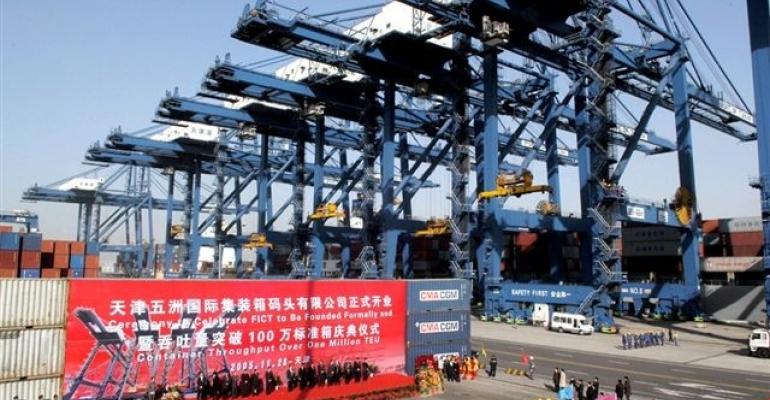Commenting on the year ahead, international law firm Ince & Co said shifting economic trends, trade flows and global demographic patterns, in tandem with changes in port ownership and ongoing investment in modernisation and expansion are creating the conditions for what could be a defining year for the global ports industry.
Suggesting that port operators should expect a year of transformation in 2018, Ince & Co’s global ports & maritime infrastructure practice head Ton van den Bosch said: “Recent years have been marked by changing fortunes across the world’s ports.”
“There is every prospect that 2018 is set to be a transformative year for these terminals and their ongoing development, with real commercial opportunities to be had for those operators who can navigate these waters successfully.”
Van den Bosch highlighted ports in Asia and Africa as being subject to the biggest changes, especially as China’s Belt and Road Initiative takes off.
Noting that China has invested $20bn in ports and terminals alone in the past 12 months, Van den Bosch said gateway ports in Asia and Africa may be the wave of the future.
Looking ahead to this year and beyond, Ince & Co sees a shift towards gateway operations, rather than transhipment as changing trade flows in Asia and Africa create captive markets ready to be tapped.
Van den Bosch said: “When we look at countries like Congo or East Timor, we clearly see operators scrambling to establish gateway terminals to open up these markets to global trade.”
“This is a pattern that is repeating all over the world: Belt and Road investment improves local infrastructure and transport links, and operators move in to build. Put bluntly, cargo volumes needing to reach localised geographies in these frontier markets have few other choices. Port operators that can lead this trend and get into these markets early will be able to build themselves as a lasting and indispensable presence to these nations.”
Other factors include the consolidation of ownership among big Chinese companies, with the combined entity of Cosco and China Shipping set to become the biggest container terminal operator by capacity by 2020, and climbing from fourth and eighth in the global rankings.
“If 2017 was the year when the West woke up to the Belt and Road, 2018 will be the year that its impact will begin to become apparent. Indeed, we can already see the macroeconomic effects of Belt and Road beginning to manifest”, said van den Bosch.
This does not mean that small players will be marginalised however, he said. But they must react quickly to seize opportunities.
“Smaller port operators may well be wondering what their place will be in this sector in the near future, given this pace of change. The most important thing to understand is that no-one is immune from these developments, but also that they offer commercial opportunities for operators who can take advantage of them,” said van den Bosch.
“The rapid growth, expansion and modernisation of port facilities in emerging and frontier nations is a direct reflection of the opening up of new trade routes and the liberalisation of consumer markets,” he pointed out.
But the potential is not without risk. Access to funding and regulatory issues remain challenges Ince & Co said.
“If small operators can secure funding, they have the potential to compete effectively with newer operations funded by large global players,” said van den Bosch.
“In emerging markets, financing will remain a challenge, as well as ongoing issues in terms of compliance, anti-bribery and corruption. But, fundamentally, we believe that the coming year will see an even greater pace and scale of investment for our global ports industry, creating opportunities across the supply chain,” he concluded.
Copyright © 2024. All rights reserved. Seatrade, a trading name of Informa Markets (UK) Limited. Add Seatrade Maritime News to your Google News feed.


